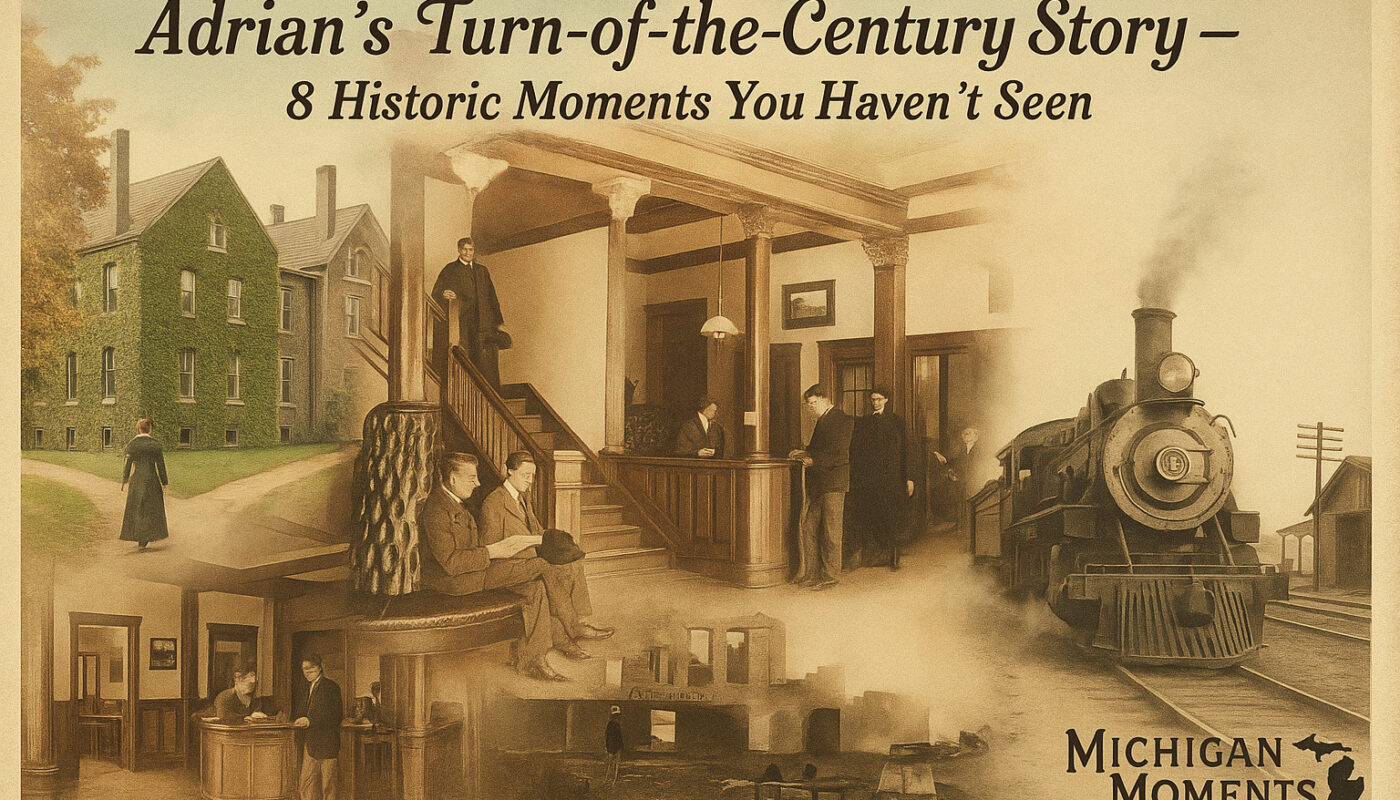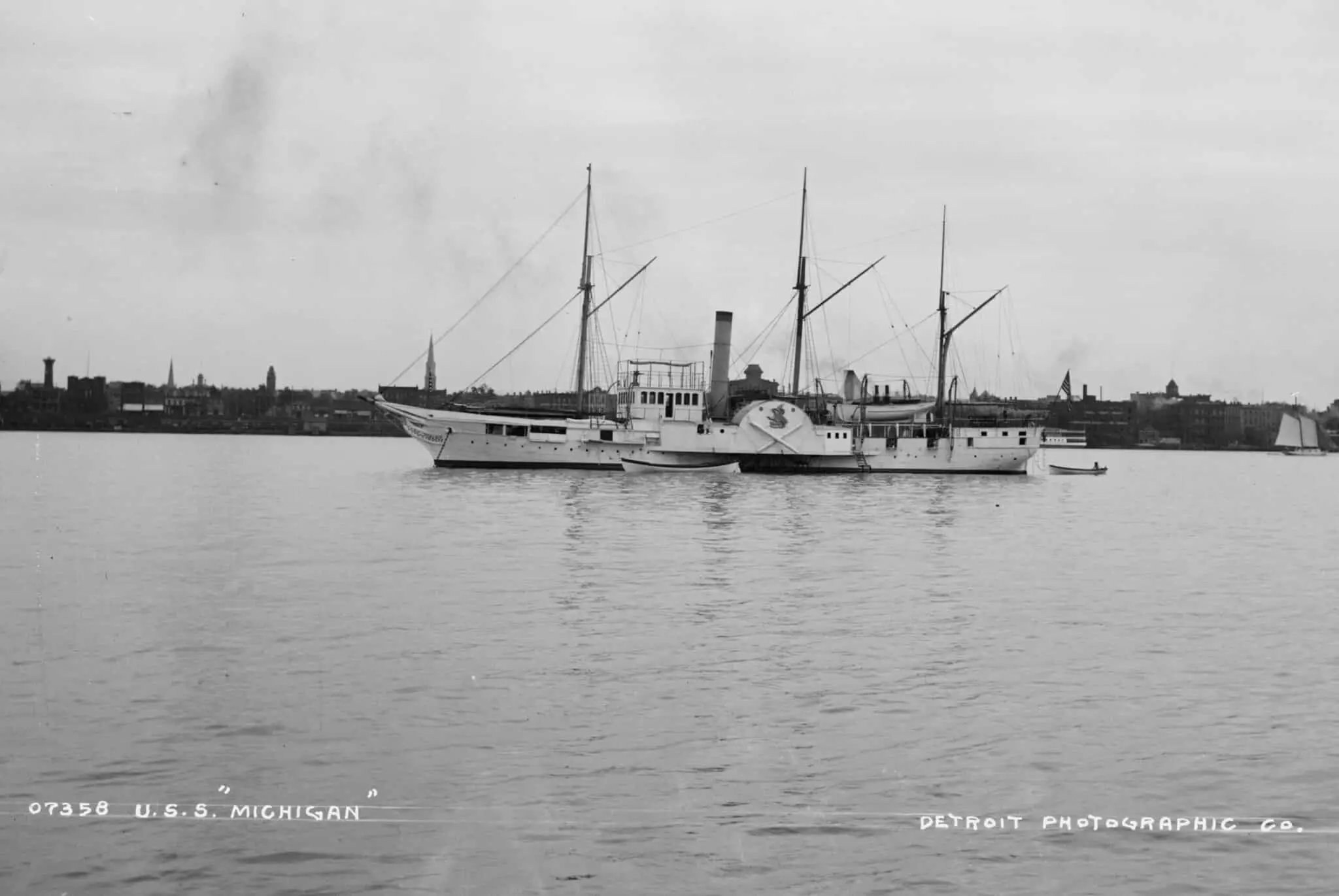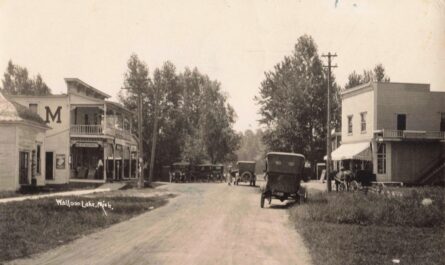From railroad crossings to roadside diners, the city of Adrian Michigan history carries a layered past. These early 20th-century images offer a snapshot of a community on the edge of modern life, caught between growth and memory.
Adrian’s YMCA: Where Business Meets Brotherhood
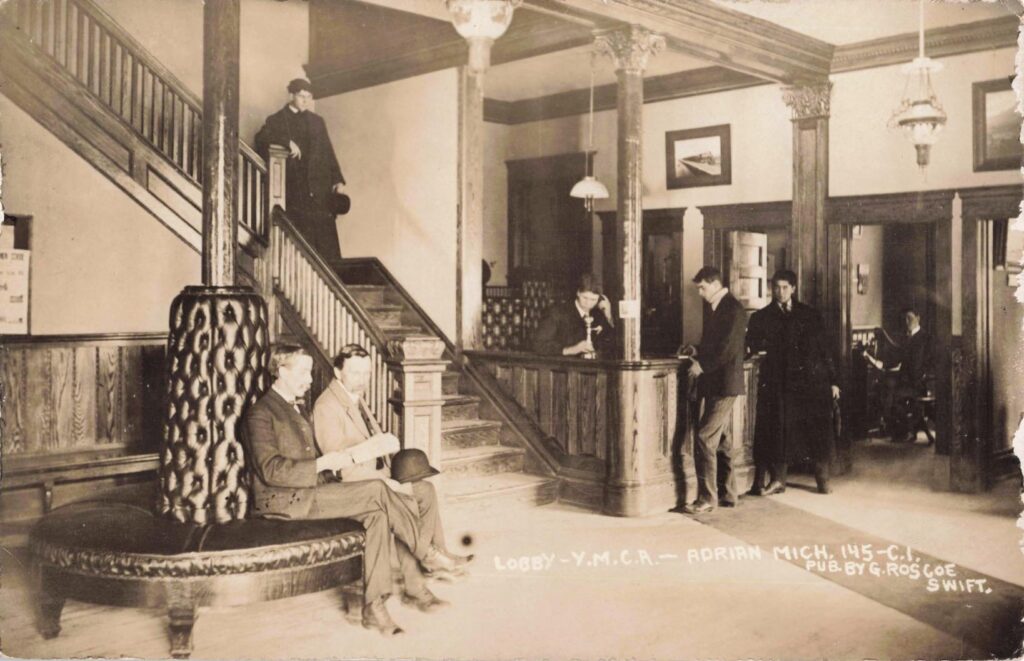
The lobby of Adrian’s YMCA wasn’t just a waiting room—it was a hub. The tufted leather furniture and carved wooden desk suggest formality, but the presence of telephones and reading material signals a place where news, commerce, and community mixed. Men gathered here before catching trains or conducting local business. It reflected a town in motion.
Adrian College: Education and Reform
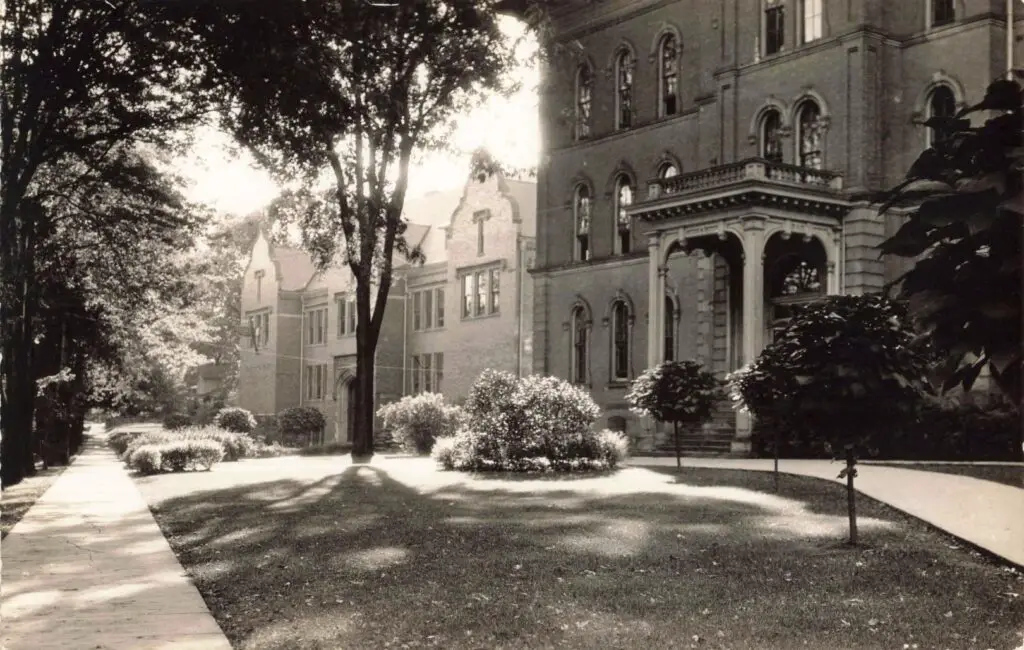
The tree-lined campus of Adrian College offered more than academics. Founded in 1859 by the Wesleyan Methodists, it was one of the first Michigan schools to admit women and Black students. At a time when most institutions were segregated by race and gender, Adrian College took a stand. The ivy-covered walls seen in the image suggest more than age—they suggest legacy.
Fire at the Lion Motor Works
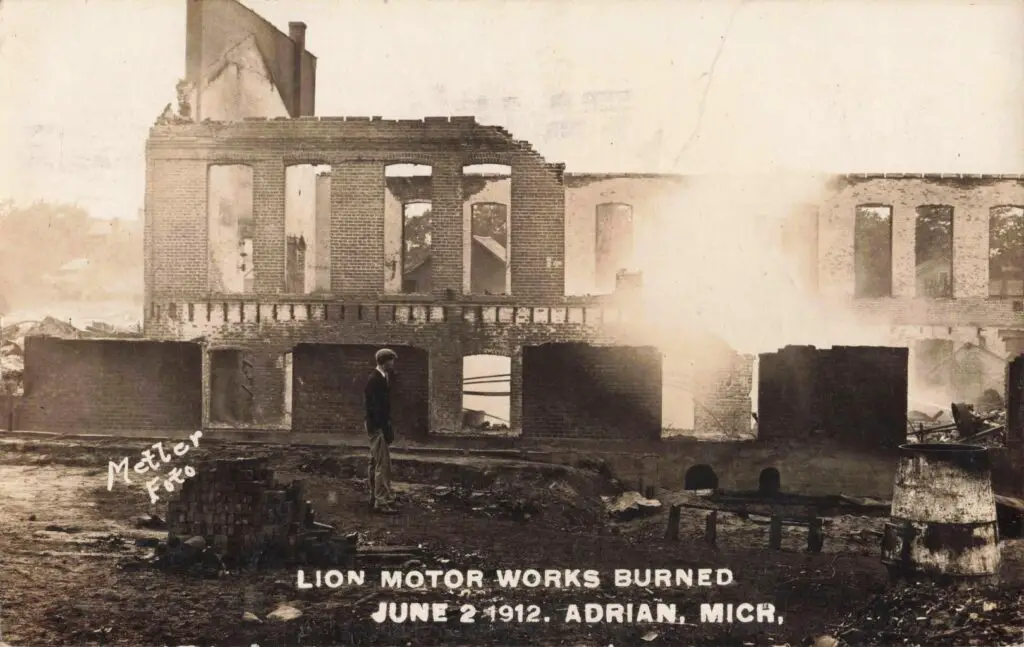
On June 2, 1912, the Lion Motor Works burned to the ground. The photo of its smoldering brick frame shows a lost opportunity. Adrian was one of several Michigan towns vying to become part of the state’s emerging automotive industry. The factory fire ended that effort. The structure never reopened, and the event marked a turning point in the city’s industrial hopes.
Main Street Movement

A bustling view down Main Street in Adrian shows an active commercial center. Horse-drawn wagons competed with early automobiles. City Hall rises at the far end of the street like a civic anchor. People crowd the sidewalks: men in bowler hats, women in long coats. The drugstore on the right, Hart and Shaw, represents the small businesses that formed the backbone of downtown Adrian.
A Place for Public Welfare: The Industrial Home for Girls
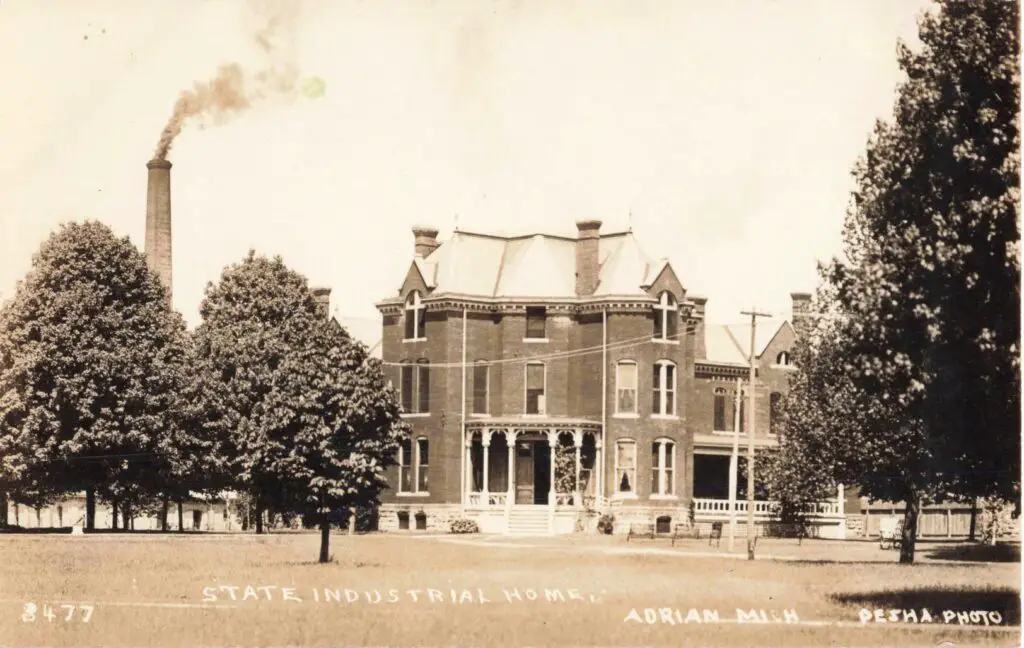
The Administration Building of Adrian’s Industrial Home for Girls was part of a larger statewide system. Girls were placed here not for punishment, but for correction, education, and guidance. This Progressive Era institution reflected Michigan’s early experiment with rehabilitative social services. The architecture is more residential than institutional, suggesting a shift from incarceration to reformation.
Hotel Lenawee and Modern Travel
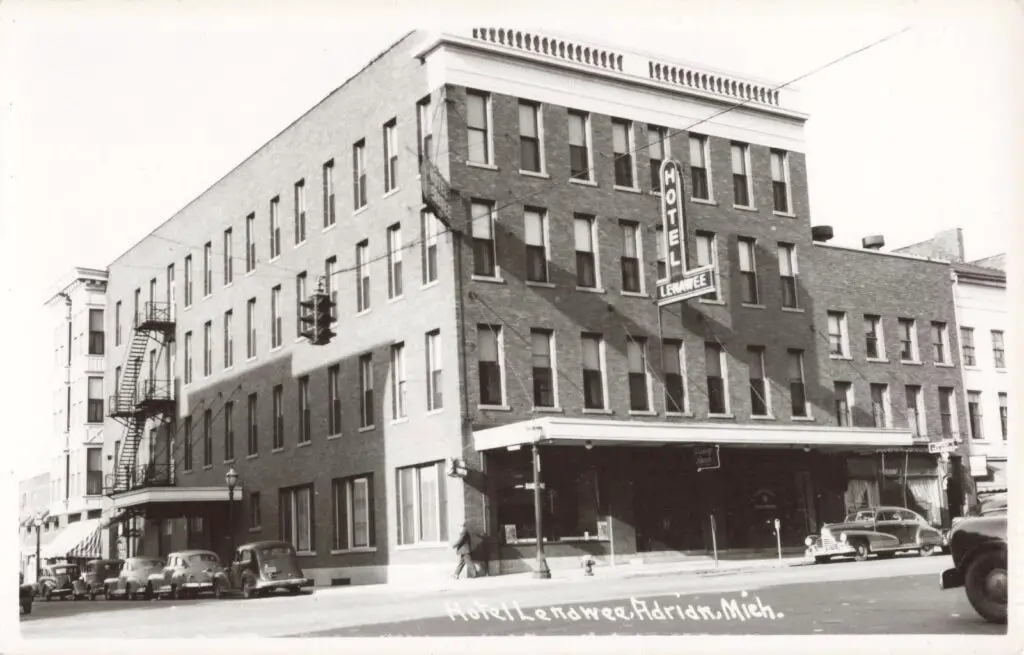
The image of Hotel Lenawee captures Adrian’s attempt to stay relevant to traveling salesmen and businesspeople. With multiple stories, fire escapes, and early 20th-century automobiles parked in front, it shows how hospitality evolved with the automobile age. The hotel’s placement in the heart of town suggests its importance as both a social and commercial anchor.
The Wigwam on U.S. 223
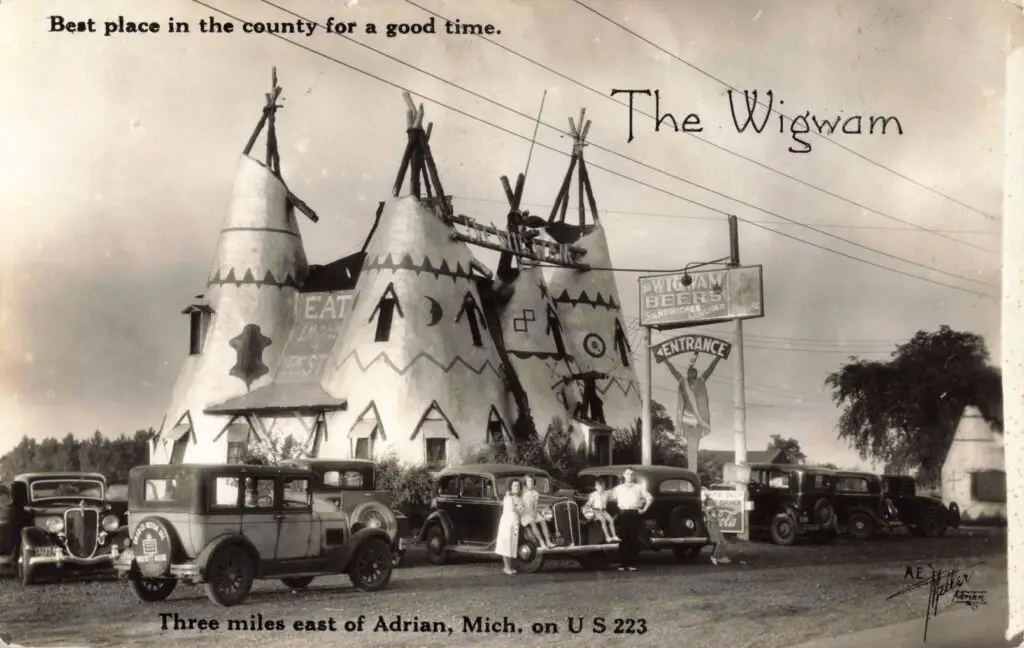
The Wigwam served food, beer, and entertainment just three miles east of town. With its giant faux tipi design and highway-facing signs, it was part of a nationwide trend of roadside attraction architecture. While its theme would not pass cultural scrutiny today, it remains a piece of Americana from the golden age of motor travel.
Centennial Celebration, 1925
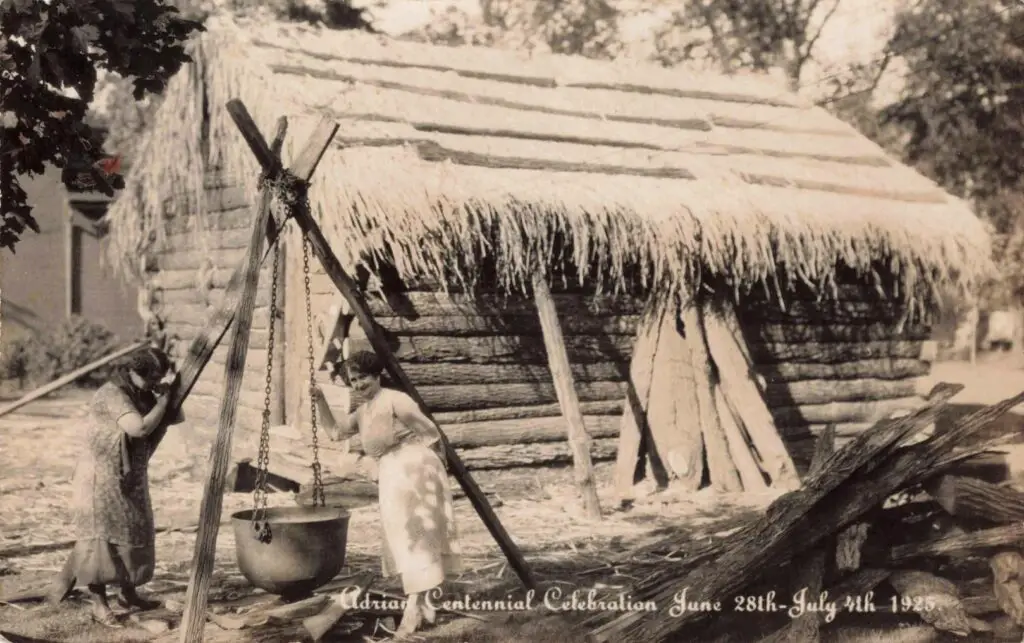
In 1925, Adrian marked 100 years since its founding. Residents dressed in period costumes and reenacted frontier scenes. In one photo, two women stir a massive pot over an open flame, recreating pioneer cooking outside a log structure. It was both a nostalgic celebration and a staged exercise in civic pride.
A Final Stop: The Lake Shore Depot
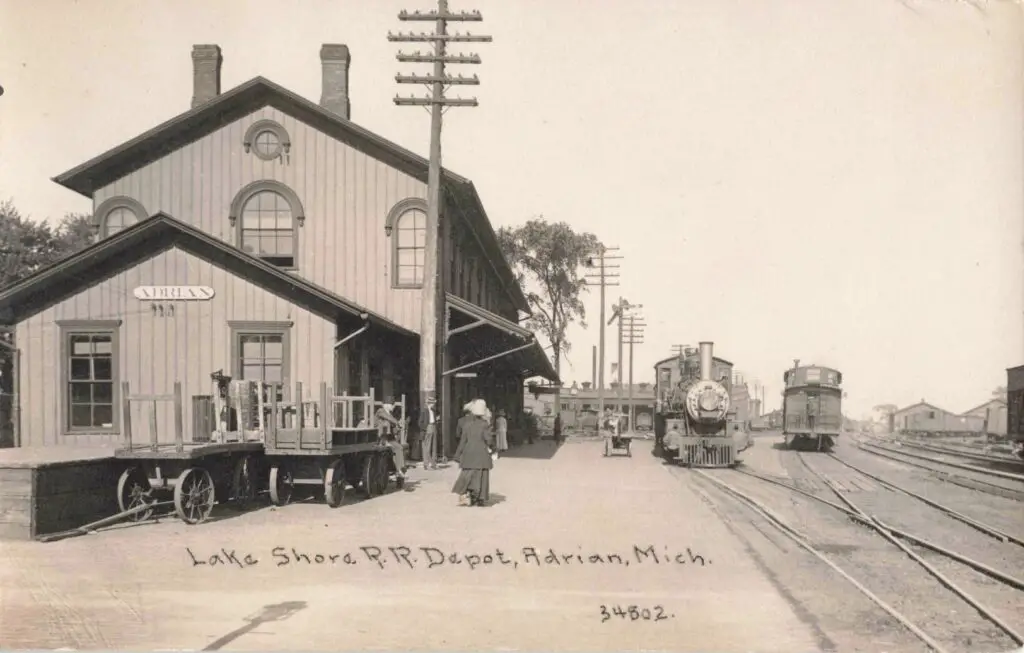
The Lake Shore Railroad Depot linked Adrian to the rest of Michigan and beyond. It was a conduit for trade, communication, and migration. The station’s design was practical, yet welcoming. Passengers arrived, freight departed, and the city’s economy ran on time. Railroads didn’t just move goods—they moved ideas and ambition.
Video – Adrian’s Legacy in Postcards
Each of these historic photos reflects a specific part of Adrian’s identity. Whether it’s a factory in ruins, a college walkway, or a centennial reenactment, these images aren’t just nostalgic—they’re instructional.
Adrian wasn’t the biggest town, but it mattered. It tried. It failed and rebuilt. And in the process, it left behind a photographic trail of how small cities adapted to change.
The railroad gave it reach. The college gave it values. The streets gave it commerce. And even the roadside diner gave it character.
This was Adrian, Michigan—on the edge of modern America.
